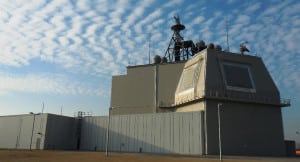
The head of Indo-Pacific Command said the U.S. must invest in more defensive capabilities in the region to counter Chinese advancements, particularly reiterating the need for an Aegis Ashore System on Guam. Adm. Phil Davidson told the Senate Armed Services Committee on Tuesday that China is “accelerating their ambitions to supplant the United States and our leadership role in the rules-based international order,” and additional funds are needed to help deter military conflict and win one if it emerges. He…

 By
By 











